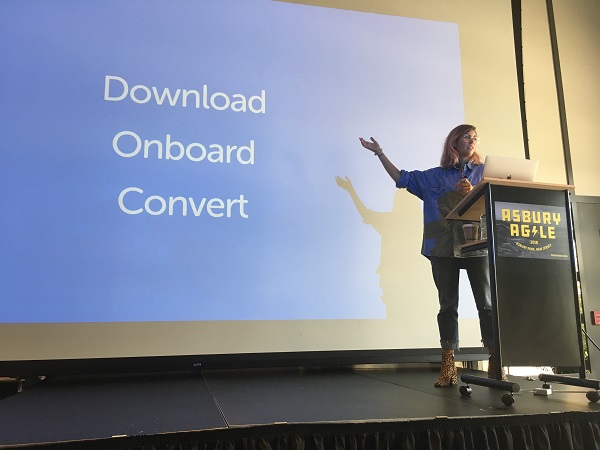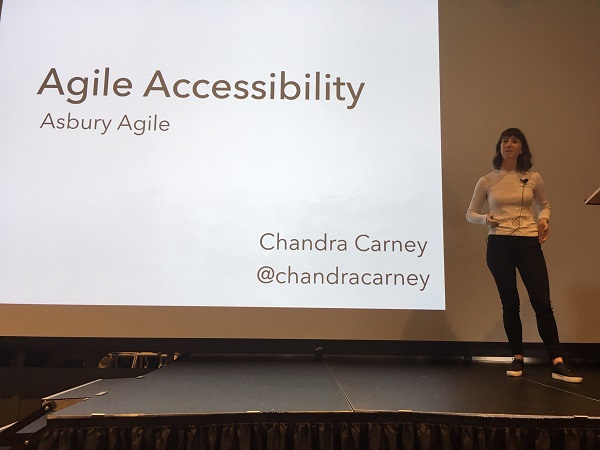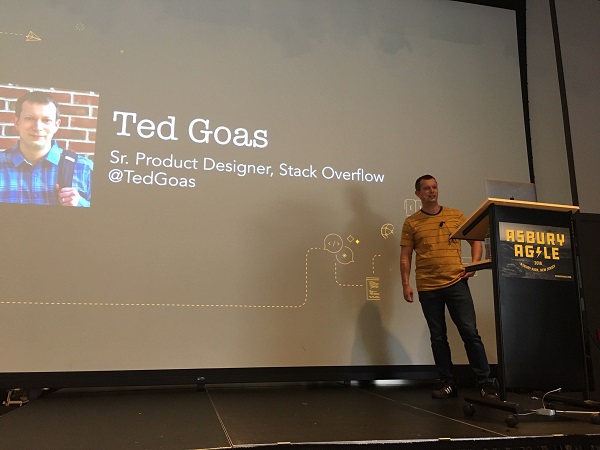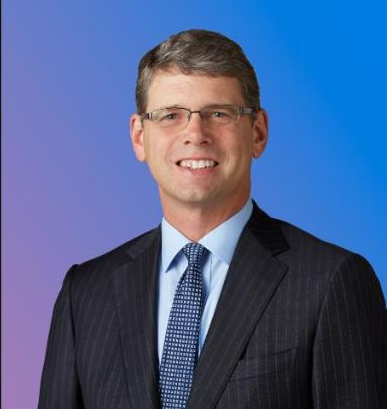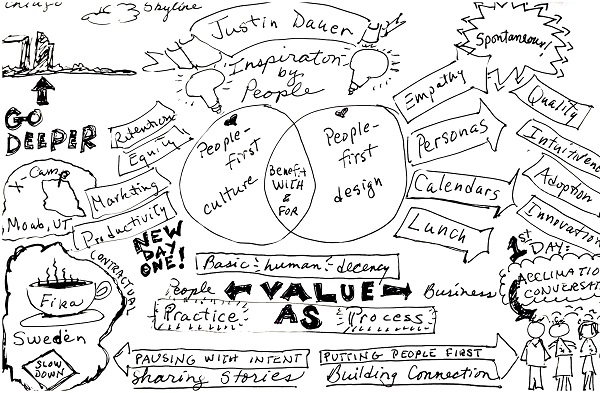Asbury Agile, a Conference with a Unique Vibe, Showcases Developers and Designers
At the most recent Asbury Agile conference, a packed audience at The Asbury hotel, in Asbury Park, heard short talks from tech specialists, while soaking up the ambiance of this Jersey shore town.
The event was kicked off by Bret Morgan and Kevin Fricovsky, who established the laid-back annual conference in 2010. Many of the 200 attendees had participated in past Asbury Agile events.
Each year, Morgan and Fricovsky make a point of inviting local high school students to Asbury Agile to enhance their understanding of tech careers. This year, students from Communications High School, in Wall, attended the event.
NJTechWeekly.com stopped by the morning sessions of the conference and heard several of the speakers. Here is what they said:
Setting Users Up for Success
Fiona Rolander, Lead Product Designer at Bontouch (New York), who took the stage first, discussed how app designers can help users succeed. Bontouch’s mission is to use digital technologies to reduce friction in the real world and help people perform better, she said.
The first step is to internalize how your company defines “value.” That will involve changing how you describe your new app to the user. “Instead of thinking about your product as a collection of features or cool technologies,” remember why you developed it in the first place, and whom you developed it for. “Your product should enable a person to be a better version of themselves.”
By using evaluation techniques, said Rolander, startups can identify the unintended negative consequences of their products. For example, a food delivery service could be contributing to added traffic or more waste. But the unintended consequences might not all be negative. Companies can use these same techniques to find added values, like saving people time. So, evaluation techniques can also enable companies to shift their value proposition: For instance, that food delivery service could become the eco-friendly food delivery company.
Rolander was particularly critical of most current designs for app onboarding. Apps are notorious for the fact that people often download them and never use them. That’s because designers create high friction for users by asking for too much information up front, or providing too much introductory detail.
“Before you ask anyone to give you credit card information or their email or any other credentials,” you should get the user to figure out how to use the app, and to understand why the app is special. She noted that Duolingo is a great example of this kind of frictionless app.
Baking Accessibility into Agile Environments
Chandra Carney, engineering accessibility lead at Aetna Health (New York), gave a talk called “Accessibility in Agile Environments.” Accessibility involves providing products and services for everyone and removing barriers to using the web.
When designing websites, you should think about visual impairments, but also keep in mind the deaf and hard-of-hearing, people with mobility challenges, and even people with speech impairments who might try to use voice interfaces, as well as people with cognitive and neurological disabilities, she said. While it’s the right thing to do, it’s practical, too. “If we don’t provide access, those users can’t use our products.”
Unfortunately, agile development doesn’t lend itself to incorporating equal access. Agile teams are fast-paced and ever-changing, and they move quickly, she said. They continuously iterate their products and constantly push their codes. That becomes a problem when a team needs to step back and take a snapshot of where they are in terms of accessibility. “So much changes between an audit, snapshot and when they go to work,” she said.
To make sure that accessibility features are given the same priority as other features, a top-down approach is needed, Carney said. There has to be buy-in from the management and the executive team. “They all need to understand that accessibility is important, whether you scare them with the legal rules or you make them empathize with users, or you pull numbers if they are numbers-driven.”
Making Remote Teams Work
Ted Goas, senior product designer at Stack Overflow (New York), gave a popular talk about designing teams to be “remote first”, rather than just accommodating some remote workers. “This lets companies hire people who live anywhere, not just an hour from the company’s home office.” It also lets them hire the best workers and keep good people who want to move away, since they can work from anywhere. Goas talked about how design teams can work together effectively when most of the members are in different offices, even around the world.
One of the keys is treating all members of the team in the same way. For example, Stack Overflow helps everyone outfit his or her home with the essential tools of the trade. “I get the same standing desk, the same chair, office supplies, headsets,” so everyone is on an equal footing. All the team members use tools like chat and Google Docs. “Everyone knows what’s going on, no matter where they are.”
Also, everyone individually takes video meetings, even if they are in the same building. This prevents clusters of people conferring together and excluding others. Occasionally, the company gives out some swag. “We factor in the shipping costs to make sure that everyone gets the swag,” not just the people in the office.
Another key, he said, is building workflow around the remote team members. Finding hours when everyone is available is difficult, Goas said, but the team schedules meetings between 10 a.m. and 2 p.m. Eastern time, when everyone can attend. These are the hours for synchronous communications, he added. These are also the hours when people tend to comment in chat groups, and when it’s easier to pull them into Google Hangouts. “It’s also a popular time for big things, like design critiques or shipping a big feature.”
Outside those hours, team members leave comments in Slack or communicate via email. That’s the time for asynchronous communications. “We make sure that people have enough time to focus on their deep work, while being able to talk to each other, stay on the same page and keep the work moving,” Goas said.


